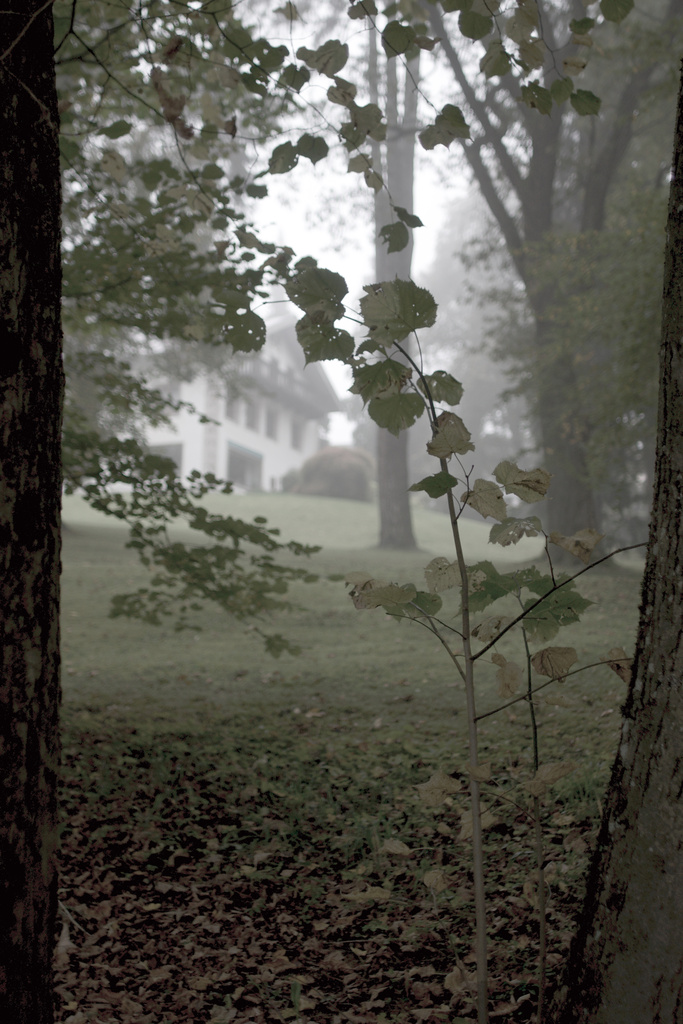

Hearing descending steps on the road below, I decided to react quickly: Dialling down the ISO, cramming in the slowest possible f-stop I estimated I should get a low shutter speed, slow enough to render the pedestrian in a blurry manner, avoiding the impression of a frozen moment and setting her in contrast to the static rectangles of the buildings. I managed, and internal stabilisation helped to keep the sensor steady.
Using the same camera always and everwhere seems to pay out. Of course sometimes I’d enjoy a small P&S, but I do fear the effect of being not completely in unison with the tool, the camera being quirky in the wrong moment. Juha Hataaja from Lightscrape does wonders with his LX-3, and besides his visual and creative powers he knows his tool after 125.000+ exposures. I could imagine that this really makes up the distinction from many of the interested hobby photographers: Doing it, excercising it, coming to a level where all the settings become self-evident and the tool becomes part of eye and hand. In the end it’s what Herrigel describes in “Zen In The Art Of Archery”. And it seems there’s no shortcut.
Thanks for the encouragement, Markus. Here you made quite a demonstration of “decisive moment”. In fact, this is photography at the level of Sam Abell (and some others), artists who not only manage to capture the moment but also capture the colors in an extraordinary manner. I especially like how you have the white buildings in the background naturally “melting” into the bright sky. An overall light tone which suits well the main subject. And interesting how hearing made you aware of a possibility to capture a visual situation – and the sound is sort of included in the photograph.
Juha, thank you very much for the laud! The circumstances were right, and also was my attentiveness, maybe supported by that overall silence that so often comes with fog. Re. the colors I have to blame a good part on raw plus bibble. At default settings there was almost no difference between buildings and sky – but that was what I needed. Bibble is really good in making use of the headroom and recovering details out of it. And just days before an able developer published a “bezier curve based tonal controls plugin” which came in handy to tug on the midtones to give them a tiny bit more brightness. Add to that some work with the perspective controls (I am somewhat old-fashioned with craft qualities), but overall it was not as time-consuming as it may sound.
It’s interesting to note what happens if you give your tool (=preferred camera) to somebody else who is not familar with it. Only when looking at somebody who is starting to explore “my” camera system, did I start to realise, how much of the actual camera-handling is already engrained in my subconsciousness. So, I completely agree with you, Markus – it pays of to focus on one camera system. And that’s also a strong argument against switching cameras.
Yes, and the diversification of the maker’s varieties even in the same camera class has an additional effect here in comparison to film cameras with their small number of switches: when you mastered all the menus and have customized your camera to your liking, you are much less prone to unprejudicedly comparing different camera systems. But the good thing is: it helps against gear acquisition syndrome, if pictures are what you’re after.